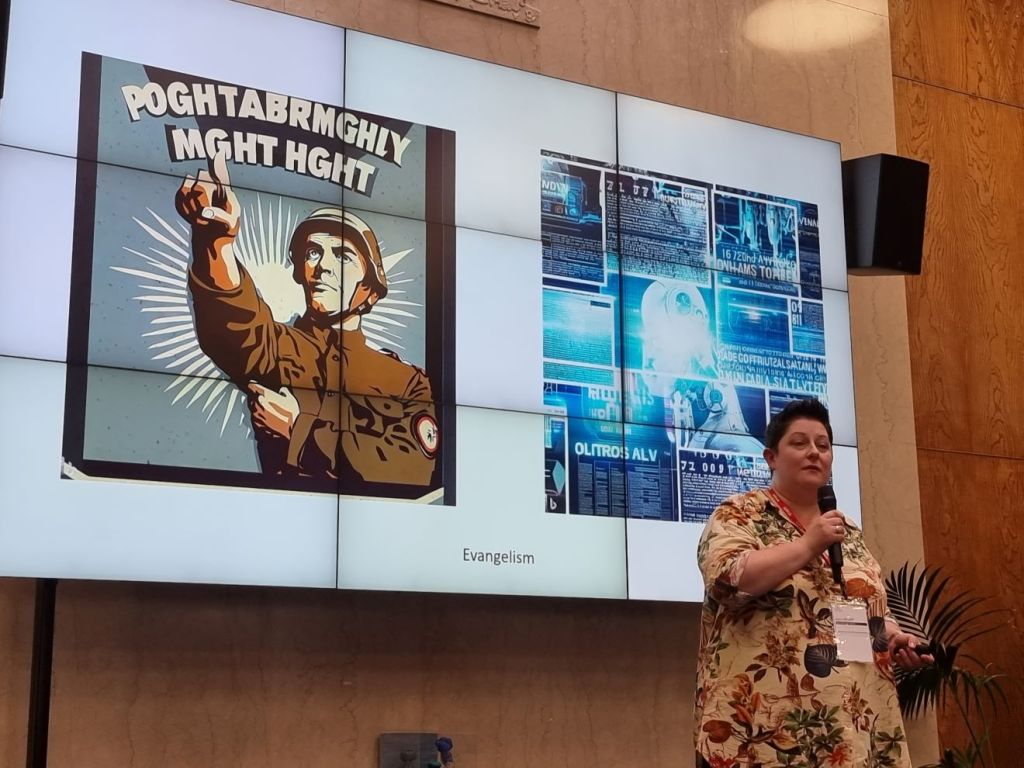
I was involved in the ISA/ISC Digital Conference a couple of weeks back and thought I would share some of my headline thoughts following the event. I note it was a busy day, including actually being involved in leading a couple of the sessions, so the below represent the standout points for me based on the sessions I managed to see.
For me there were three main themes which stuck out for me:
- Challenge the status quo and overly simplistic language and imagery
- Awareness of reductive reasoning and binary arguments
- A focus on humanity and wellbeing in a world of increasing technology use.
Challenge the status quo.
There is a clear need to challenge the status quo and particularly some of the language and visuals used when discussing technology. Laura Knight did a good job of drawing attention to this, and I will admit I have been as guilty as many others of using some of the loose, simplistic language and visuals to which she referred. The picture of the smiling student wearing a VR headset, the use of The Matrix style graphics in relation to AI ( Note: definitely guilty of this! ) and the discussion of the printing press as an analogy of the change now presented by AI, among others. All simplistic and not really representative of the situation we now find ourselves in due to AI. These simplistic images and equally simplistic language only go to strengthen false perceptions about technology. One of my favourites is the use of the dark hooded, and normally male, figure when discussing cyber crime; Not exactly representative of the organised cyber crime we see today. We need to do better.
Reductive reasoning and binary arguments
I have long argued about binary arguments and how the world is seldom simple enough to be modelled with a black and white, good and bad, right and wrong argument. The world is inherently messy and operates in many shares of grey, existing between the black and white of any two extreme positions. The issue here is that extreme positions are suited to the world of social media where the content has to be short and anything which stimulates a response is a good thing. The message and medium are entangled. This is something we need to be aware of especially as it continues to encourage echo chambers and division rather than the critical discussion and reasoning we really need.
As to reductive reasoning, I get that we often want to simplify things for people. This might be through presenting a simple model or presenting a “50 ways” or “5 ways”, such as 50 prompts for use of AI or 5 basic cyber security basics. And again, I am guilty of this, creating a framework of basics in relation to cyber security. But again the world is seldom that simple, and although the model or list of ways, makes things easier for the reader or audience, it all too often over simplifies the issue being discussed. Cyber security is more nuanced than 5 basic mitigation measures and AI prompt craft is way more nuanced than 50 prompts. The challenge here is the balance between convenience and ease of use, and mirroring the complexity of the world we live in. Too basic makes things seem too easy and therefore not representative of our world, where trying to model the real world will likely result in a model too complex for people to understand or to be useful. The balance lies somewhere in between these points.
Wellbeing and Humanity
As technology plays an increasing part in our lives then it is likely that wellbeing will become more important. Being human and the traits of being human will become more important. We will need to consider how we support wellbeing in the face of the tsunami of digital content, both positive and negative; how we will manage the uncertainty of cyber risk, how we will best use the AI solutions which could provide support and counselling however might also be designed to influence, manipulate and deceive. The question of what it means to be human and how human intelligences differ from synthetic intelligences will become all the more important. We need to make use of AI to do the tasks which it is good at, while identifying what it is that human intelligence is better at and is suited for. Ethical use of AI also plays a part here as will we want to know when we are dealing with an AI rather than a human, and are we happy for AI to play a part in key life decisions such as those related to health and finance. In the face of upsetting online content, are we happy with AI making the decisions to filter content on the grounds of wellbeing, where we know this might lead to bias in the content which we are provided, or where such a solution might be controlled by an outside agency to their own ends?
Conclusion
The conferences title was “if” and this is rather apt as I feel we find ourselves at a junction. We had the catalyst which was the pandemic that propelled us forward in relation to technology use in schools, plus we are now presented with AI, potentially an even more significant catalyst. What might the future hold? The key in my view is that we need to consider this, we need to consider how the next 5 or more years might look, and how we might shape this future to be the positive outcome we would like, or even need, it to be. How things might look in future will be directly influenced by the decisions we take now. If we do X then this may lead to Y. We need to grab hold of technology and seek to shape its use and through doing so shape our futures.

